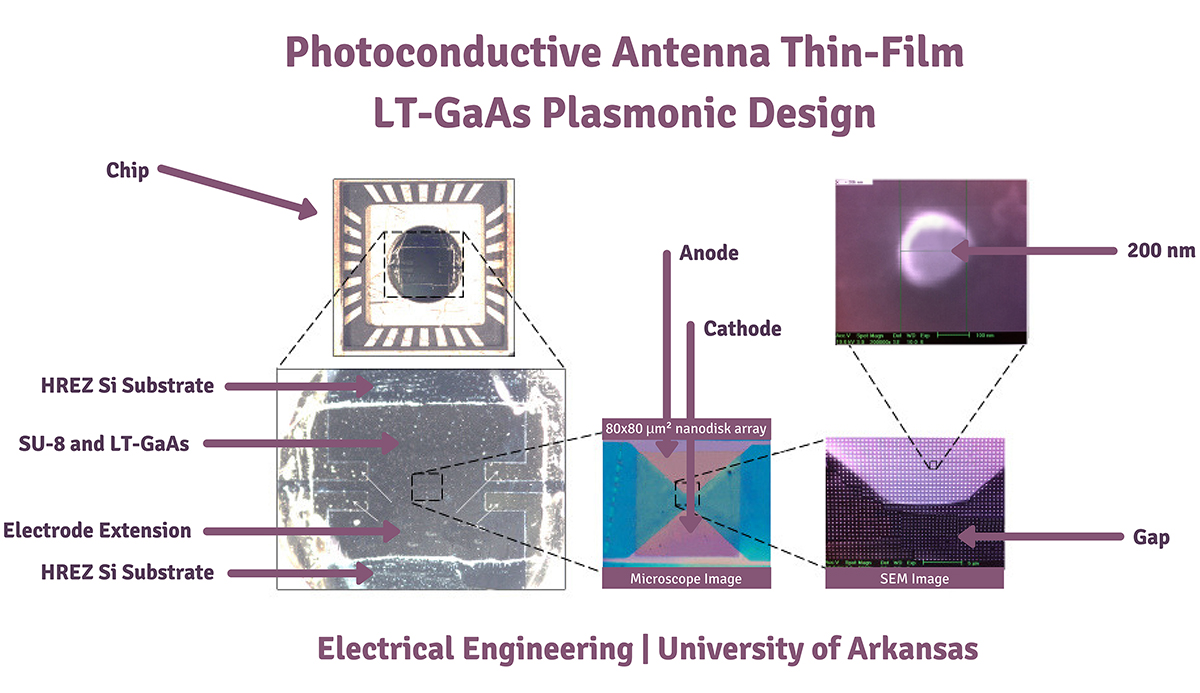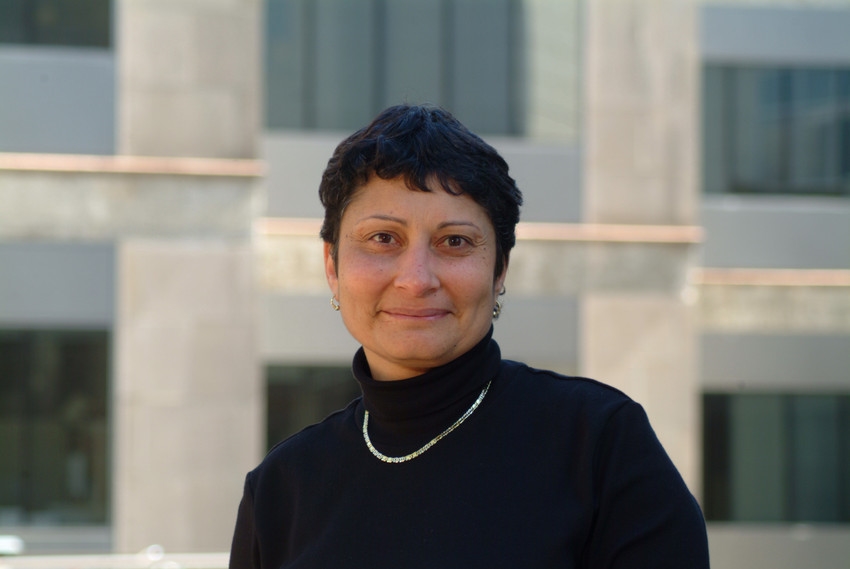Tiny Antennas Show Promise in Defense Sector
Electrical engineering research into extremely small antennas has made progress that could have a major impact on secure information exchange, giving the U.S. access to a band of frequency no other country can reach.
Electrical engineering professor Magda El-Shenawee's Terahertz Imaging and Spectroscopy Lab is known for its revolutionary research on the detection of breast cancer tumors using terahertz imaging technology. Now, El-Shenawee has published a paper suggesting terahertz antennas could have their signals strengthened for use in transmitting information.
Her paper, titled "Plasmonic Nanodisk Thin-film Terahertz Photoconductive Antenna," was presented at the international conference of Antennas and Propagation in Boston last month. The research was conducted in collaboration with TeraView Ltd., a major manufacturer of terahertz systems in the United Kingdom.
Terahertz antennas are tiny, only a fraction of a millimeter in size. By comparison, the microwave antennas used in cell phones are more than 10 times that size. The newly created terahertz antennas have sent researchers around the world racing to improve its efficiency.
Current antennas on the market provide very low power, a fraction of a milliwatt, which is adequate for some applications, such as breast cancer imaging. However, current power limitations make the antenna inferior for use in potential applications such as radar systems for defense and high-speed wireless communications.
The challenge, El-Shenawee said, is that the strength of a terahertz wave weakens when it travels because of its sensitivity to water, including humidity in the air. For the wave to travel longer distances, the transmitting terahertz antenna needs to radiate electromagnetic waves of higher power at the source.
El-Shenawee's idea for improving the terahertz antenna's efficiency involves advancing the antenna material and design. She is collaborating with Hugh Churchill, a material scientist and assistant professor of physics in the J. William Fulbright College of Arts and Sciences, and Miaoqing Huang, an associate professor of computer science in the College of Engineering.
The group's plan is to provide superior terahertz emission built on plasmonic thin-film device architecture. Early results have show a three-fold increase in power output.
Shenawee's current terahertz antenna was built using nanodisk arrays on top of a thin film of a semiconductor. In this case, low temperature grown Gallium Arsenide, a typical material for this type of antennas, was used. The antenna is excited by femtosecond laser, with antenna electrodes located below the semiconductor to increase the light trapped in the semiconductor and the photocurrent, and hence the radiated terahertz power.
So far, the achieved power is 3 microwatts, compared to conventional antennas that provide 1 microwatt.
High-powered terahertz antennas like the one proposed by El-Shenawee's research have applications in high-speed electronics wireless communication. El-Shenwaee said applications in defense communication, especially concerning reliable transmission and secure information exchange, can be significant.
"If we can advance terahertz antennas by advancing their output power, the U.S. will be using a band of frequency that no other country has the technology for yet," she said.

Topics
Contacts
Magda El-Shenawee, professor
Department of Electrical Engineering
479-575-6582,
magda@uark.edu
Nick DeMoss, director of communications
College of Engineering
479-575-5697,
ndemoss@uark.edu
Headlines
Four Students Named Goldwater Scholars; Two Earn Udall Honorable Mentions
Four U of A students have received the prestigious Goldwater Scholarship, an award for top students in mathematics, science, and engineering.
Cross-Campus Collaboration Culminates in New Outdoor Geological Installation
Grand opening event to celebrate the new GeoLab installation at the U of A’s Gearhart Hall courtyard is set for May 3. The installation will be open to the public year-round.
First Students to Use Online Degree to Hone Nursing Leadership, Elevate Patient Care
Hanna Baxendale and Wendi Kimbrell will begin coursework in the Doctor of Nursing Practice-Executive Master of Business Administration program offered by the Eleanor Mann School of Nursing and Walton College.
Join the Office for Sustainability on a Final Cruise to Campus
Cruise to Campus Wednesdays have fostered a gathering space for individuals interested in biking to campus. Drop by the Old Main Lawn from 7:30-10 a.m. Wednesday for coffee, something to eat and conversation.
Fay Jones School Student Ambassador Program Gives Voice to Design Students
The student ambassador program at the Fay Jones School of Architecture and Design is built to connect top design students with their school, its alumni, its future students and others inside and outside the school.





